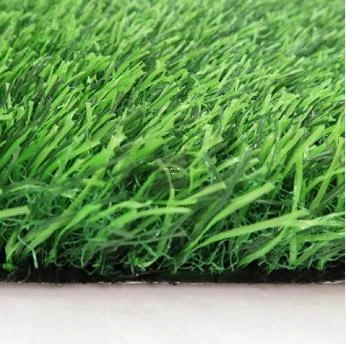
- Afrikaans
- Arabic
- Belarusian
- Bengali
- Czech
- Danish
- Dutch
- English
- Esperanto
- Estonian
- Finnish
- French
- German
- Greek
- Hindi
- Hungarian
- Icelandic
- Indonesian
- irish
- Italian
- Japanese
- kazakh
- Rwandese
- Korean
- Kyrgyz
- Lao
- Latin
- Latvian
- Malay
- Mongolian
- Myanmar
- Norwegian
- Persian
- Polish
- Portuguese
- Romanian
- Russian
- Serbian
- Spanish
- Swedish
- Tagalog
- Tajik
- Thai
- Turkish
- Turkmen
- Ukrainian
- Urdu
- Uighur
- Uzbek
- Vietnamese
Installing Synthetic Turf on an Incline for Enhanced Outdoor Spaces
Dec . 04, 2024 09:26 Back to list
Artificial Grass on a Slope A Modern Solution for Landscaping Challenges
The use of artificial grass in landscaping has surged in popularity over the past few years, reflecting a growing trend toward maintenance-free outdoor spaces. One of the applications of this innovative material is its installation on slopes, which presents unique challenges and benefits that deserve attention. In this article, we will explore the advantages of using artificial grass on sloped terrains, the installation process, and the overall impact it has on outdoor aesthetics and functionality.
Advantages of Artificial Grass on Slopes
1. Erosion Control Natural grass has its own set of challenges, particularly when it comes to steep inclines. Heavy rainfall can lead to soil erosion, washing away nutrients and compromising the stability of your landscape. Artificial grass mitigates this issue by providing a stable surface that helps to hold the soil in place, preventing erosion and maintaining the integrity of the slope.
2. Low Maintenance One of the most significant benefits of artificial grass is its low maintenance requirements. Unlike traditional grass that requires regular mowing, watering, and fertilization, artificial turf remains green and vibrant throughout the year without any of the labor-intensive upkeep. On slopes, where maintaining natural grass can be particularly challenging due to the incline, artificial grass offers a practical, low-maintenance solution.
3. Aesthetic Appeal Artificial grass comes in a variety of shades and textures, enabling homeowners to select a product that best suits their aesthetic preferences. On a slope, this allows for a visually appealing landscape feature that can enhance the overall look of a property. The vibrant green color can provide a sense of lushness and serenity, even in dry or rocky conditions typical of sloped terrains.
Installation Process
Installing artificial grass on a slope is more complex than on level ground, but with the right approach, it can be done effectively
. Here are the key steps to ensure a successful installationartificial grass on a slope

1. Site Preparation The first step involves clearing the slope of any existing vegetation and debris. It's important to ensure that the surface is even and well-drained. Depending on the severity of the slope, excavation may be necessary to create a stable base.
2. Creating a Base Installing a solid base is crucial for artificial grass to function well, especially on a slope. A mixture of crushed stone and sand can be compacted to provide a flat surface that allows for proper drainage while supporting the structure of the turf.
3. Joining Sections Depending on the size of the area, it may be necessary to sew or glue together multiple sections of artificial grass. This is particularly important on a slope, where seams can become more visible if not secured properly. Ensuring that the grass fibers are aligned in the same direction will enhance the natural look.
4. Securing the Edges Properly securing the edges of the artificial grass is essential on a slope to prevent movement or slipping. Using landscape staples or adhesive can help anchor the turf in place, maintaining its position even during heavy rainfall.
5. Final Touches Once installation is complete, brushing the grass fibers with a broom helps to lift them and create a realistic appearance. Additionally, adding infill material can provide stability and support for the blades, ensuring they stand upright for an authentic look.
Conclusion
Installing artificial grass on a slope is an effective way to overcome the challenges posed by natural grass in these areas. With its benefits in erosion control, low maintenance, and aesthetic appeal, artificial grass not only enhances the visual landscape but also improves the functionality of sloped areas. As more homeowners seek to create sustainable and beautiful outdoor spaces, the adoption of artificial grass on slopes will undoubtedly continue to rise, showcasing a modern solution to traditional landscaping challenges. Whether for residential or commercial properties, the transformation of sloped terrains with artificial grass is a testament to innovative landscaping techniques that benefit both the land and its inhabitants.
-
The Benefits of Artificial Turf for Indoors
NewsJul.15,2025
-
How Artificial Grass Suppliers Ensure Quality Products
NewsJul.15,2025
-
Artificial Grass and Pets: A Space for Relaxation
NewsJul.08,2025
-
Balcony & Outdoor Decoration with Artificial Grass
NewsJul.08,2025
-
Best Indoor Artificial Grass for Home
NewsJul.07,2025
-
Best Pet Turf for Dogs: Safe & Durable Artificial Grass Options
NewsJul.07,2025
Products categories









